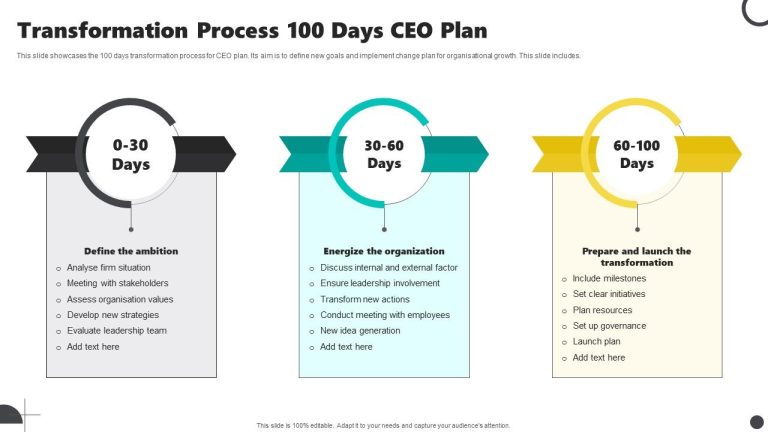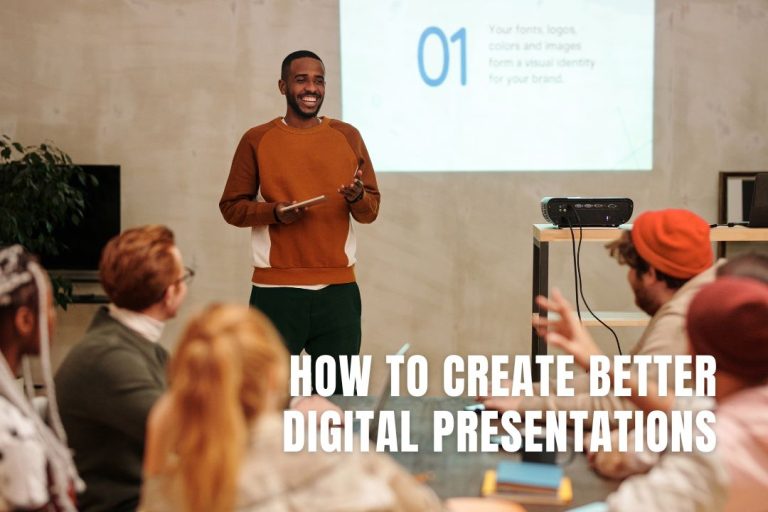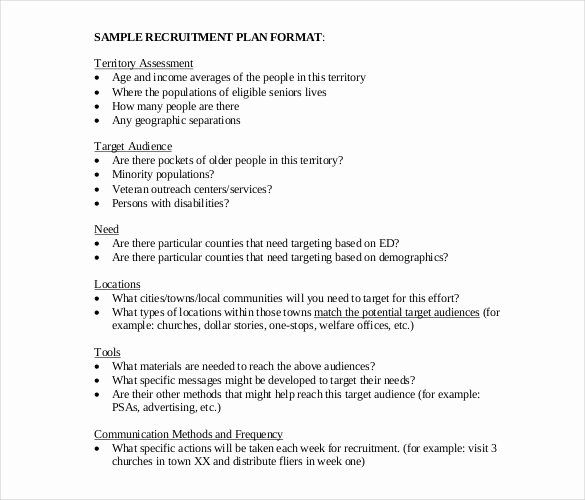How to Own The Stage in Presentation?
To own the stage in a presentation, maintain a confident presence, engage the audience through storytelling, and deliver a clear message with enthusiasm. A powerful and engaging presentation captures the attention and interest of the audience, leaving a lasting impression.
By mastering the art of stage presence and incorporating effective communication techniques, you can create a memorable and impactful presentation that resonates with your listeners. We will explore strategies and tips to help you own the stage and deliver a successful presentation.
Striking A Powerful Opening
Crafting a Captivating Hook
When it comes to presentations, the first few seconds can make or break your connection with the audience. That’s why it’s crucial to craft a captivating hook that grabs their attention right from the start. A well-crafted hook not only sets the tone for the rest of your presentation but also intrigues your audience, making them eager to hear more.
Here are a few strategies to help you create a powerful opening:
- Create a Sense of Intrigue: Start with a statement or anecdote that leaves your audience curious and wanting to know more. For example, “Imagine this: the world’s most influential people are all waiting for you to share your revolutionary idea.”
- Highlight a Surprising Fact or Statistic: Begin with a shocking or unexpected fact related to your topic. This will immediately capture attention and spark curiosity. For instance, “Did you know that every 60 seconds, over 3 million videos are viewed on YouTube?”
- Use a Thought-Provoking Quote: Incorporate a powerful quote that resonates with your message and sets the stage for what’s to come. For example, “As Maya Angelou once said, ‘People will forget what you said, people will forget what you did, but people will never forget how you made them feel.’
Remember, your hook should be tailored to your audience and relevant to your presentation’s topic. It should pique their curiosity and create an immediate connection with you as the speaker.
Engaging the Audience with a Compelling Story
Storytelling is an incredibly powerful tool for engaging your audience and capturing their attention. Human beings are wired to respond to stories, and incorporating one into your presentation can instantly create an emotional connection.
Here’s how you can use storytelling to make your opening more compelling:
- Choose a Personal Anecdote: Share a personal experience that relates to your topic. This helps to establish your credibility and creates a relatable connection with your audience. For example, “A few years ago, I found myself in a situation similar to what many of you might be facing today…”
- Share an Inspiring Success Story: Begin by recounting a story of someone who achieved remarkable success or overcame significant challenges. This inspires and motivates your audience to pay attention to your message. For instance, “Let me tell you about John, a self-made entrepreneur who started with nothing but a dream and built a multi-million dollar empire.”
- Create a Vivid Scene: Set the stage by describing a specific scenario or situation that your audience can visualize. This draws them into your presentation and makes them feel like active participants. For example, “Picture yourself standing on a mountaintop, the wind in your hair and a breathtaking view stretching out before you.”
Remember, a well-crafted story is not just about entertainment, but also about making your message memorable and relatable to your audience.
Using Thought-Provoking Questions
Another effective way to captivate your audience and set a powerful opening is by using thought-provoking questions. Thought-provoking questions engage your audience’s minds, encouraging them to think deeply and participate actively in your presentation.
Here’s how you can use questions to grab attention:
- Rhetorical Questions: Ask a question that you don’t expect your audience to answer out loud since the answer is obvious. This creates an engaging mental dialogue. For instance, “Have you ever wondered what it takes to achieve true success?”
- Reflective Questions: Pose a question that encourages your audience to reflect personally on a particular topic or issue. This makes them feel connected to your presentation. For example, “How many times have you let fear hold you back from pursuing your dreams?”
- Open-Ended Questions: Ask questions that require more than a simple “yes” or “no” answer. This promotes active participation and encourages your audience to share their thoughts and ideas. For instance, “What strategies have you used to overcome challenges in your own life?”
By using thought-provoking questions, you not only provoke engagement but also generate curiosity, ensuring your audience remains attentive throughout your presentation.
Remember, a striking and powerful opening sets the stage for a successful presentation. Whether you choose to start with a captivating hook, a compelling story, or thought-provoking questions, make sure it resonates with your audience and leaves a lasting impression.
Effective Body Language And Voice Modulation
When it comes to delivering a captivating presentation, effective body language and voice modulation are key factors that can help you own the stage. Mastering confident posture and gestures, maintaining eye contact, using facial expressions, and utilizing vocal variety are essential skills that can greatly enhance your presentation. In this blog post, we will explore each of these elements in detail and provide you with actionable tips on how to incorporate them into your next presentation.
Mastering Confident Posture and Gestures
Confident posture and gestures can instantly grab the attention of your audience and convey your message with authority. Here are some tips to help you master them:
- Stand straight with your shoulders back and relaxed, exuding confidence and professionalism.
- Use purposeful gestures that are consistent with your message. Avoid excessive movements that may distract or confuse your audience.
- Practice open body language by keeping your arms uncrossed and your hands visible, signaling approachability and openness.
- Use podium or stage space to your advantage, taking confident steps when necessary to emphasize key points.
Maintaining Eye Contact and Using Facial Expressions
Eyes are the windows to the soul, and maintaining eye contact with your audience can foster connection and engagement. Additionally, facial expressions can convey emotions and reinforce your message. Here’s how you can leverage these techniques:
- Scan the room and make eye contact with individuals or groups of people, creating a sense of inclusivity and involvement.
- Hold eye contact for a few seconds before transitioning to another individual, ensuring each audience member feels engaged.
- Smile naturally when appropriate, as it can establish rapport and make your presentation more relatable.
- Adjust your facial expressions based on the content and emotion you want to convey, emphasizing key points with raised eyebrows or a furrowed forehead.
Utilizing Vocal Variety to Emphasize Key Points
Vocal variety is a powerful tool that can bring life to your presentation and keep your audience captivated. Here are some techniques you can employ to emphasize your key points:
- Adjust your volume, speaking loudly and clearly to command attention and project confidence.
- Vary your pace, slowing down for impactful moments and speeding up for excitement or urgency.
- Emphasize keywords and important phrases by slightly raising your voice or using a different tone. This will help your audience remember and internalize the key takeaways.
- Incorporate pauses strategically, allowing your audience to digest information and creating suspense when delivering impactful statements.
By mastering confident posture and gestures, maintaining eye contact and using facial expressions, as well as utilizing vocal variety, you can effectively elevate your presentation and leave a lasting impression on your audience. Implement these techniques and own the stage with confidence!
Commanding The Stage With Strong Presence
Commanding the Stage with Strong Presence
When it comes to delivering a powerful presentation, commanding the stage with a strong presence is crucial. A commanding presence not only captivates the audience but also establishes credibility and enhances the overall impact of your message. In this section, we will explore three key elements that contribute to establishing a commanding presence: confidence, voice projection, and effective use of movement and space.
Establishing a commanding presence through confidence
Confidence is the foundation of a commanding stage presence. When you exude confidence, your audience will be more inclined to listen, engage, and trust your message. Here are some strategies to help you establish confidence on stage:
- Prepare thoroughly: Know your material inside out, rehearse your presentation multiple times, and anticipate potential questions or challenges. The more prepared you are, the more confident you will feel.
- Adopt a power pose: Before stepping on stage, stand tall with your shoulders back and feet shoulder-width apart. This open and expansive posture sends a signal to your brain and boosts your confidence.
- Visualize success: Close your eyes and imagine yourself delivering your presentation with poise and confidence. Visualizing success can help reduce anxiety and increase your confidence levels.
Projecting a clear and assertive voice
Your voice is a powerful tool that can command the attention of your audience and emphasize key points in your presentation. Here are some tips for projecting a clear and assertive voice:
- Breathe deeply: Take deep breaths to calm your nerves and expand your lung capacity. This will enable you to project your voice with more clarity and power.
- Speak at a moderate pace: Speaking too fast can make your message difficult to follow, while speaking too slow can bore the audience. Find a moderate pace that allows your words to be easily understood and gives your voice a confident and assertive tone.
- Use pauses strategically: Pauses can add emphasis and allow your audience to absorb important points. Utilize pauses strategically to give your audience time to reflect on your message.
Utilizing movement and space effectively
Movement and spatial awareness can enhance your stage presence and engage your audience. Here are some ways to effectively utilize movement and space during your presentation:
- Use purposeful gestures: Incorporate gestures that align with your message and enhance your verbal communication. Avoid excessive or distracting movements that may take away from your message.
- Move with intention: Take deliberate steps or make purposeful movements across the stage to maintain your audience’s attention and create visual interest.
- Utilize the entire stage: Explore different areas of the stage to connect with different audience members and create a dynamic presence. However, avoid pacing back and forth as it can be distracting.
Storytelling Techniques For Impactful Presentations
When it comes to delivering impactful presentations, incorporating storytelling techniques can make all the difference. Storytelling has a unique ability to captivate an audience, engage their emotions, and leave a lasting impression. By weaving stories into your presentations, you can effectively convey your messages, create memorable moments, and own the stage.
Incorporating storytelling to make presentations memorable
To make your presentations truly memorable, it’s important to incorporate storytelling throughout your content. This involves crafting a narrative that connects with your audience on a deeper level. The key is to use stories that are relevant, relatable, and resonate with your message. By sharing personal anecdotes or real-life examples, you can bring your ideas to life and make them more tangible.
Using anecdotes and examples to convey messages
Anecdotes and examples are powerful tools for conveying messages in presentations. They help to illustrate your points, add credibility to your ideas, and make your content more relatable. When using anecdotes, choose stories that align with your main message and provide valuable insights. Similarly, when using examples, make sure they are relevant to your topic and highlight the key concepts you want to emphasize.
Creating emotional connections through storytelling
One of the most effective ways to engage your audience and leave a lasting impact is by creating emotional connections through storytelling. Emotions have a powerful influence on how information is received and remembered. By incorporating stories that evoke emotions such as joy, empathy, or inspiration, you can create a more memorable and persuasive presentation. Consider the emotions you want your audience to experience and craft your stories accordingly.
Visual Aids And Props To Enhance Presentations
When it comes to delivering a captivating presentation, visual aids and props play a crucial role in capturing the audience’s attention and enhancing the key messages. They provide a visual and interactive element to the presentation, making it more memorable and engaging for the audience. In this article, we will explore two essential aspects of utilizing visual aids and props – selecting and designing visually appealing slides and incorporating relevant props to enhance key messages. Additionally, we will discuss how to engage the audience with interactive visual aids.
Selecting and designing visually appealing slides
Visually appealing slides are essential to keep your audience engaged and focused on your message. Here are some tips on how to select and design visually appealing slides:
- Keep it simple: Avoid overcrowding your slides with excessive text or complex visuals. Use minimalistic designs with clear and concise content.
- Use high-quality images: Incorporate relevant, high-resolution images that support and enhance your message. Choose visuals that are easily recognizable and add value to your presentation.
- Color scheme: Select a color scheme that aligns with your topic and helps convey your message effectively. Use contrasting colors for text and background to ensure readability. Avoid using too many colors that may distract the audience.
- Typography: Use clear and readable fonts for your text. Stick to one or two fonts throughout the presentation to maintain consistency.
- Visual hierarchy: Use font sizes, bolding, italics, and bullet points to create a visual hierarchy that highlights key points and makes the content easy to follow.
Incorporating relevant props to enhance key messages
Props can be powerful tools to enhance your presentation and make your key messages more memorable. Here are some ways to incorporate relevant props:
- Create a physical connection: Use props that your audience can interact with, touch, or examine. This creates a personal connection and reinforces the message.
- Relevant and meaningful props: Choose props that directly relate to your topic and reinforce your message. They should add value to your presentation and help clarify complex concepts.
- Timing: Introduce props at the right moment to create impact and emphasize key points. Use props sparingly to avoid overwhelming your audience.
- Practice and confidence: Familiarize yourself with using props before the presentation. Practice their incorporation seamlessly into your delivery to exude confidence and maintain a smooth flow.
Engaging the audience with interactive visual aids
Interactive visual aids can significantly enhance audience engagement and leave a lasting impression. Here’s how to effectively engage your audience:
- Videos and multimedia: Incorporate videos, audio clips, or animations to bring your presentation to life. Make sure they are relevant, well-timed, and add value to your message.
- Charts and graphs: Use visual representations like charts, graphs, and infographics to simplify complex data and statistics. These visuals make information easier to digest and comprehend.
- Live demonstrations: Showcase your expertise and engage your audience by including live demonstrations, hands-on activities, or interactive quizzes. This encourages active participation and creates a memorable experience.
- Question and answer sessions: Allocate time for Q&A sessions throughout your presentation. Encourage audience participation by inviting questions about the content or incorporating interactive polls and surveys.
By incorporating visually appealing slides, relevant props, and interactive visual aids, you can own the stage and deliver a captivating presentation that leaves a lasting impact on your audience.
Commanding Q&A Sessions Like A Pro
Preparing for potential questions and objections
Before stepping onto the stage to deliver a powerful presentation, it’s crucial to anticipate potential questions and objections that may arise during the Q&A session. By preparing thoroughly, you can address these concerns with confidence and clarity, leaving a lasting impression on your audience.
Here’s how you can effectively prepare:
- Research your audience: Gain a thorough understanding of the people who will be attending your presentation. Consider their background, interests, and perspective to identify the potential questions and objections they might have.
- Create a comprehensive FAQ list: Compile a list of frequently asked questions and potential objections based on your research. Craft concise and precise responses, ensuring you have solid evidence and supporting data to back up your answers.
- Practice, practice, practice: Rehearse your responses repeatedly to ensure clarity and confidence. Consider conducting mock Q&A sessions with colleagues or friends who can play the role of different audience members, challenging you with difficult questions or objections.
Responding confidently and succinctly to inquiries
During a Q&A session, your ability to respond confidently and succinctly to inquiries will enhance your credibility and demonstrate your expertise. To excel in this area, follow these valuable tips:
- Listen attentively: Carefully listen to each question or inquiry, allowing the questioner to express their thoughts fully. Maintain eye contact, and show genuine interest in their query.
- Clarify if needed: If a question seems unclear or ambiguous, politely seek clarification from the questioner. By understanding their question fully, you can provide a more accurate and relevant response.
- Be concise and to the point: Deliver your response succinctly, avoiding lengthy explanations or unnecessary jargon. Keep your answer focused on addressing the core of the question.
- Provide evidence and examples: Support your responses with concrete evidence, statistics, or real-life examples. This will enhance the credibility of your answer and provide tangible value to the audience.
- Engage with the questioner: When responding, acknowledge the questioner by name if possible, and maintain eye contact with them while answering. This personal touch fosters a connection and shows respect.
Managing difficult or unexpected questions with poise
Occasionally, you may encounter difficult or unexpected questions that catch you off guard. However, with the right approach and mindset, you can manage these situations with poise and professionalism.
Consider the following strategies:
- Stay calm and composed: Take a moment to breathe and compose yourself before responding. Maintain control of your emotions, and don’t let unexpected questions fluster you.
- Reframe if necessary: If a question seems confrontational or off-topic, politely reframe it in a way that aligns with your presentation’s main theme or objective. This technique allows you to redirect the conversation while still addressing the question.
- Admit when uncertain: If you’re unsure about how to answer a particular question, it’s better to admit it than to provide incorrect information. Express your willingness to research or follow up with the questioner later.
- Bridge to related topics: If a question is beyond the scope of your presentation, skillfully bridge it to relevant topics that are within your expertise. This technique enables you to provide valuable insights while staying on track.
- Show gratitude and respect: Regardless of the difficulty or unexpected nature of a question, always thank the questioner for their contribution. Show respect for their engagement and create a positive atmosphere for further interactions.
By following these strategies, you can confidently navigate through Q&A sessions, capturing the attention and admiration of your audience. Ready to own the stage and showcase your expertise? Prepare for potential questions, respond confidently and succinctly, and manage difficult or unexpected inquiries with poise!
Overcoming Nerves And Building Confidence
When it comes to delivering a successful presentation, overcoming nerves and building confidence is essential. The fear of public speaking, also known as glossophobia, can be a major obstacle for many individuals. However, with the right techniques and practices, you can learn to own the stage and captivate your audience. In this section, we will explore techniques to reduce anxiety and stage fright, the importance of practicing mindfulness and deep breathing exercises, as well as how preparation and rehearsal can help build self-confidence.
Techniques to Reduce Anxiety and Stage Fright
Stage fright can be a debilitating feeling that affects your ability to deliver a presentation confidently. However, there are effective techniques that can help alleviate anxiety and reduce stage fright:
- Visualize success: Imagine yourself delivering a successful presentation and receiving positive feedback from your audience. This technique can help reframe your mindset and boost your confidence.
- Use positive affirmations: Repeat positive statements to yourself before and during the presentation, such as “I am prepared,” “I am confident,” and “I am knowledgeable.” These affirmations can help calm your nerves and increase your self-belief.
- Control your breathing: Deep breathing exercises can help relax your body and mind. Take slow, deep breaths before and during your presentation to reduce anxiety and promote a sense of calm.
Practicing Mindfulness and Deep Breathing Exercises
Mindfulness is the practice of being fully present in the moment, without judgment or attachment. By incorporating mindfulness into your presentation preparation, you can enhance your focus and reduce anxiety. Here are some mindfulness and deep breathing exercises you can practice:
- Mindful breathing: Close your eyes and focus on your breath. Notice the sensations of each inhale and exhale. If your mind wanders, gently bring your attention back to your breath.
- Body scan: Start from the top of your head and slowly move down, bringing your attention to each part of your body. Notice any areas of tension and consciously release them.
- Progressive muscle relaxation: Tense and relax each muscle group in your body, starting from your toes and working your way up to your head. This exercise can help reduce physical tension and promote relaxation.
Building Self-Confidence Through Preparation and Rehearsal
One of the most effective ways to build self-confidence for a presentation is through thorough preparation and rehearsal:
- Research and gather information: Take the time to thoroughly research your topic and gather relevant information. The more knowledgeable you are, the more confident you will feel during your presentation.
- Organize your content: Create a clear and logical structure for your presentation. Break down your content into sections and create an outline that guides you through the main points.
- Practice, practice, practice: Rehearse your presentation multiple times, either alone or in front of a trusted friend or colleague. This will help you become familiar with your content, improve your delivery, and boost your confidence.
By implementing these techniques and practices, you can overcome nerves and build the self-confidence needed to own the stage in your presentation. Remember, confidence is a skill that can be developed with time and practice. With each presentation you give, you will grow more comfortable and confident in your ability to captivate your audience.

Credit: www.ricksmithhypnosis.com
Captivating Closing Techniques
Summarizing key points with impact
As you approach the end of your presentation, it’s crucial to recap the key points you have discussed. By summarizing these points in a concise and impactful manner, you ensure that the audience leaves with a clear understanding of your message. To achieve this, consider utilizing the following techniques:
- Use bullet points or numbered lists to highlight the main takeaways. This allows the audience to quickly grasp the essential points of your presentation.
- Keep your summary brief and focused. Avoid going into excessive detail and instead focus on the most important concepts that you want your audience to remember.
- Consider using visual aids, such as infographics or slides, to reinforce your key points visually. This can enhance retention and engagement.
Incorporating a call to action to inspire action
Every great presentation should aim to inspire action or provoke a desired response from the audience. To achieve this, incorporate a strong call to action in your closing. Here are some effective ways to do so:
- Offer a specific and actionable step that the audience can take immediately. This could include signing up for a newsletter, visiting a website, or attending a future event related to your topic.
- Highlight the benefits and value of taking action. Explain how it can positively impact the audience’s lives, careers, or businesses.
- Create a sense of urgency by emphasizing that the time to act is now. Use compelling language and persuasive techniques to encourage immediate action.
Leaving a lasting impression with a memorable conclusion
To truly own the stage in your presentation, it’s essential to leave a lasting impression with a memorable conclusion. Here are some suggestions to ensure your closing is impactful:
- End with a powerful quote, anecdote, or story that relates to your presentation’s main theme. This can evoke emotions and create a lasting impression.
- Reiterate your main message in a concise and memorable way. Use strong and memorable language to leave a lasting impression on the audience.
- Consider incorporating a visual element, such as a captivating image or video, to enhance the impact of your conclusion. This can help reinforce the emotions and messages you have conveyed throughout the presentation.
By employing these captivating closing techniques, you can ensure that your presentation ends on a high note. Summarizing key points, incorporating a call to action, and leaving a lasting impression will leave your audience inspired, engaged, and ready to take action.
Engaging The Audience Through Audience Interaction
Engaging your audience is crucial when it comes to delivering a successful presentation. One of the most effective ways to captivate your listeners is through audience interaction. By actively involving your audience in the presentation, you create a dynamic and engaging environment that keeps their attention and enhances their learning experience. In this section, we will explore three key strategies to engage your audience through audience interaction.
Encouraging audience participation with interactive exercises
One way to encourage audience participation is by incorporating interactive exercises into your presentation. These exercises can range from simple question-and-answer sessions to more elaborate activities that require group collaboration. Interactive exercises not only keep your audience engaged but also allow them to actively apply the knowledge or concepts you are presenting.
Here are a few examples of interactive exercises you can include:
- Individual brainstorming: Ask your audience to write down their ideas or solutions related to a topic or problem you introduce. This encourages individual thinking and helps spark creativity.
- Pair or group discussions: Divide your audience into pairs or small groups and provide them with discussion prompts or questions. This allows them to exchange ideas and perspectives, fostering a sense of collaboration and creating a more interactive atmosphere.
- Case studies: Present real-life scenarios or case studies related to your topic and ask your audience to analyze them or propose solutions. This not only engages your audience but also provides practical applications of the concepts you are presenting.
Incorporating group activities or discussions
Incorporating group activities or discussions is another effective way to engage your audience and promote interaction. Group activities not only encourage active participation but also facilitate peer learning and foster teamwork. Here are a few ideas for incorporating group activities:
- Group problem-solving: Present a problem or challenge to your audience and ask them to work together in groups to come up with a solution. This encourages collaboration and allows participants to share their perspectives and ideas.
- Role-playing: Assign different roles or characters to participants and ask them to act out a scenario relevant to your presentation. This not only engages the audience but also promotes creativity and helps them understand the practical application of the concepts presented.
- Group presentations: Divide your audience into small groups and assign each group a specific topic or subtopic related to your presentation. Ask each group to prepare a short presentation and encourage them to interact with other groups by asking questions or providing feedback.
Adapting to the audience’s needs and preferences
Finally, it is essential to adapt your presentation to the needs and preferences of your audience. By tailoring your content and delivery style to what resonates with your audience, you can create a more engaging and personalized experience. Here are some tips to help you adapt to your audience:
- Research your audience: Before your presentation, gather information about your audience’s background, interests, and knowledge level. This will help you understand their needs and adapt your content accordingly.
- Use audience-friendly language: Avoid jargon or technical terms that may confuse or alienate your audience. Instead, use clear and concise language that they can easily understand.
- Provide options for participation: Offer multiple ways for your audience to engage with your presentation, such as through live polls, surveys, or interactive online platforms. This allows individuals to choose the method that suits them best.
By encouraging audience participation, incorporating group activities, and adapting to the audience’s needs and preferences, you can ensure a memorable and impactful presentation that truly engages your audience. Remember, the more involved your audience is, the more likely they are to retain the information and apply it in their own lives.
Learning From Inspirational Speakers
In order to own the stage during a presentation, it is crucial to learn from those who have mastered the art of public speaking. By analyzing and studying renowned public speakers, you can identify successful techniques and strategies that can greatly enhance your own presentations. Applying the insights gleaned from these insightful individuals will not only boost your confidence, but also captivate your audience and leave a lasting impression.
Analyzing and studying renowned public speakers
When it comes to learning from inspirational speakers, it is important to analyze and study their techniques. By breaking down their speeches and presentations, you can uncover the secrets to their success. Take note of their body language, vocal delivery, and use of visual aids. By closely analyzing these aspects, you can gain valuable insights into how to effectively engage your audience.
Identifying successful techniques and strategies
Successful public speakers have honed their skills through trial and error, discovering strategies that work best for them. By observing their techniques, you can identify approaches that resonate with you and align with your presentation style. Pay attention to their storytelling abilities, use of humor, and ability to connect with their audience. By identifying these successful techniques, you can adapt them to your own presentations and make them uniquely your own.
Applying their insights to enhance your own presentations
Learning from inspirational speakers is not just about mimicking their style, but incorporating their insights to enhance your own presentations. By understanding the principles behind their techniques, you can adapt them to suit your own strengths and talents. Focus on areas where you can improve and experiment with incorporating their strategies. Whether it’s incorporating more storytelling or refining your body language, applying their insights can elevate your presentation to new heights.
By learning from inspirational speakers, you can supercharge your own public speaking skills. Analyze their techniques, identify successful strategies, and apply their insights to enhance your own presentations. Before you know it, you will be owning the stage and captivating your audience with confidence and charisma.
Frequently Asked Questions For How To Own The Stage In Presentation
How Do You Set A Presentation Stage?
To set a presentation stage, follow these steps: 1. Choose a suitable location with proper lighting and sound facilities. 2. Arrange the necessary equipment like projectors, microphones, and screens. 3. Prepare your content and organize it into sections for a clear flow.
4. Practice your delivery and make sure to engage the audience with eye contact and gestures.
How Do We Manage Stage And Space During Presentation?
To manage stage and space during a presentation, follow these tips: 1. Plan your movements and gestures to engage the audience effectively. 2. Utilize the entire stage to make your presence felt and reach out to all attendees. 3. Stay aware of your surroundings and adjust your movements accordingly to maximize space usage.
4. Make eye contact with different sections of the audience to establish a connection and maintain their attention.
How Do You Have A Good Stage Presence Presentation?
To have a good stage presence presentation, follow these steps: 1. Use confident body language, maintain eye contact, and engage with the audience. 2. Prepare and rehearse your content thoroughly to boost your self-assurance. 3. Use clear and concise language to convey your message effectively.
4. Incorporate storytelling techniques and inject enthusiasm to capture the audience’s attention.
How Do You Stand On Stage When Speaking?
Stand on stage with confidence and good posture. Maintain eye contact and use hand gestures to engage the audience.
Conclusion
To truly own the stage in a presentation, it takes more than just technical skills and knowledge. It requires confidence, preparation, and the ability to engage with your audience. By following these tips, you can make sure that your presentation not only captivates your audience but also leaves a lasting impression.
Firstly, start strong with a captivating opening that hooks your audience’s attention. Use visuals, storytelling, or thought-provoking questions to draw them in. Next, communicate your main points clearly and concisely, using simple language that everyone can understand. Remember to use visual aids to enhance your message and keep your audience engaged.
Additionally, don’t be afraid to inject your personality and passion into your presentation. This will help you connect with your audience on a more personal level. Finally, practice, practice, and practice some more. Rehearsing your presentation will help build confidence and ensure a smooth delivery.
By implementing these tips, you can empower yourself to confidently step onto the stage and deliver a presentation that truly captures attention and leaves a lasting impact. So, go ahead and own that stage!






